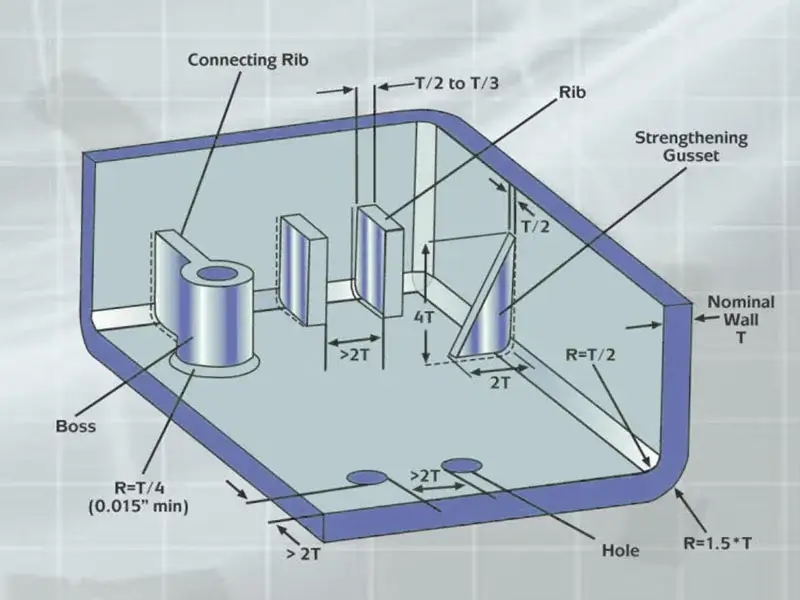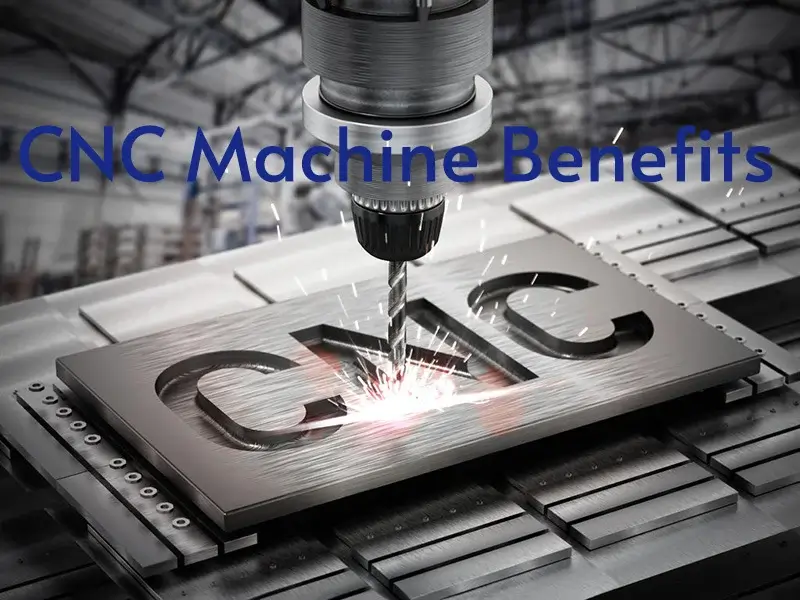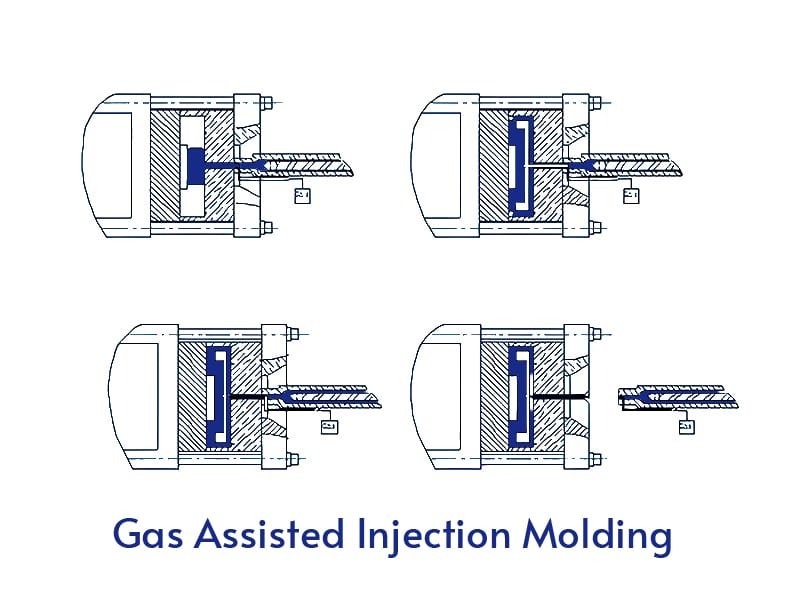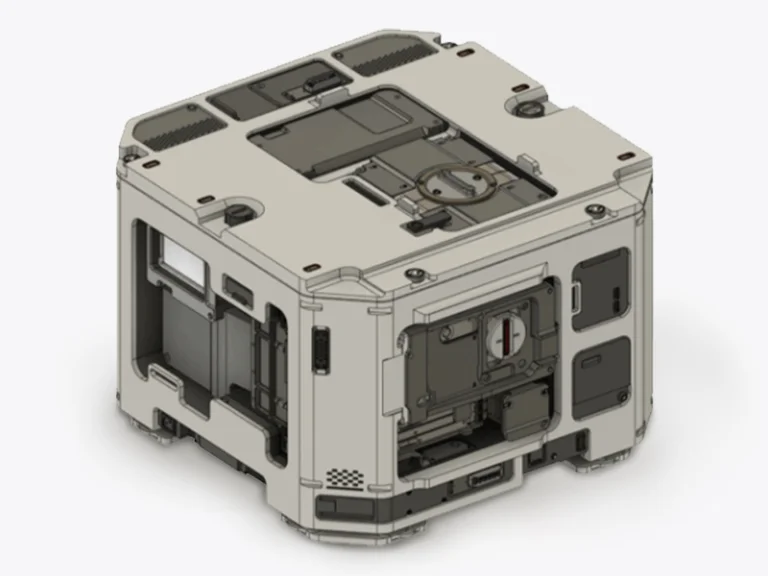Unlike traditional injection molding, which is optimized for mass production of thousands or millions of parts, low volume plastic injection moulding focuses on producing small batches efficiently, cost-effectively, and with high quality. This article will explore the process of low volume injection molding.
What is Low Volume Injection Moulding?
Low volume plastic molding refers to the production of plastic parts in quantities typically below 10,000 units, catering to prototyping, pilot runs, or niche applications. At its core, small volume injection molding involves injecting molten thermoplastic into a mold cavity, where it cools and solidifies into the desired shape. The process mirrors traditional molding but uses more affordable molds, such as those made from aluminum or 3D-printed resins, instead of hardened steel. This reduces costs significantly, as aluminum molds can be machined in days rather than weeks.
The Low Volume Injection Molding Process
The low volume injection moulding process is a streamlined sequence designed for efficiency and precision, tailored to smaller production runs. Here’s how it works:
- Mold Design and Fabrication: Engineers create a mold using CAD software, optimizing it for the desired part geometry. Once designed, the mold is fabricated—commonly through CNC machining or electrical discharge machining (EDM). Aluminum molds are faster and cheaper to produce than steel, making them optimal for short runs.
- Clamping: The mold halves are clamped together under high pressure to ensure a tight seal during injection, preventing leaks or defects.
- Injection: Molten plastic, such as ABS, polycarbonate, or nylon, is injected into the mold cavity at high pressure, filling every detail of the mold.
- Cooling: Coolant circulates through channels in the mold, rapidly solidifying the plastic to maintain dimensional accuracy and prevent warping.
- Ejection: Once cooled, the mold opens, and ejector pins release the finished part, ready for inspection or post-processing.
- Quality Control: Parts undergo rigorous checks, often using Statistical Process Control (SPC), to detect issues like sink marks, warping, or incomplete fills.
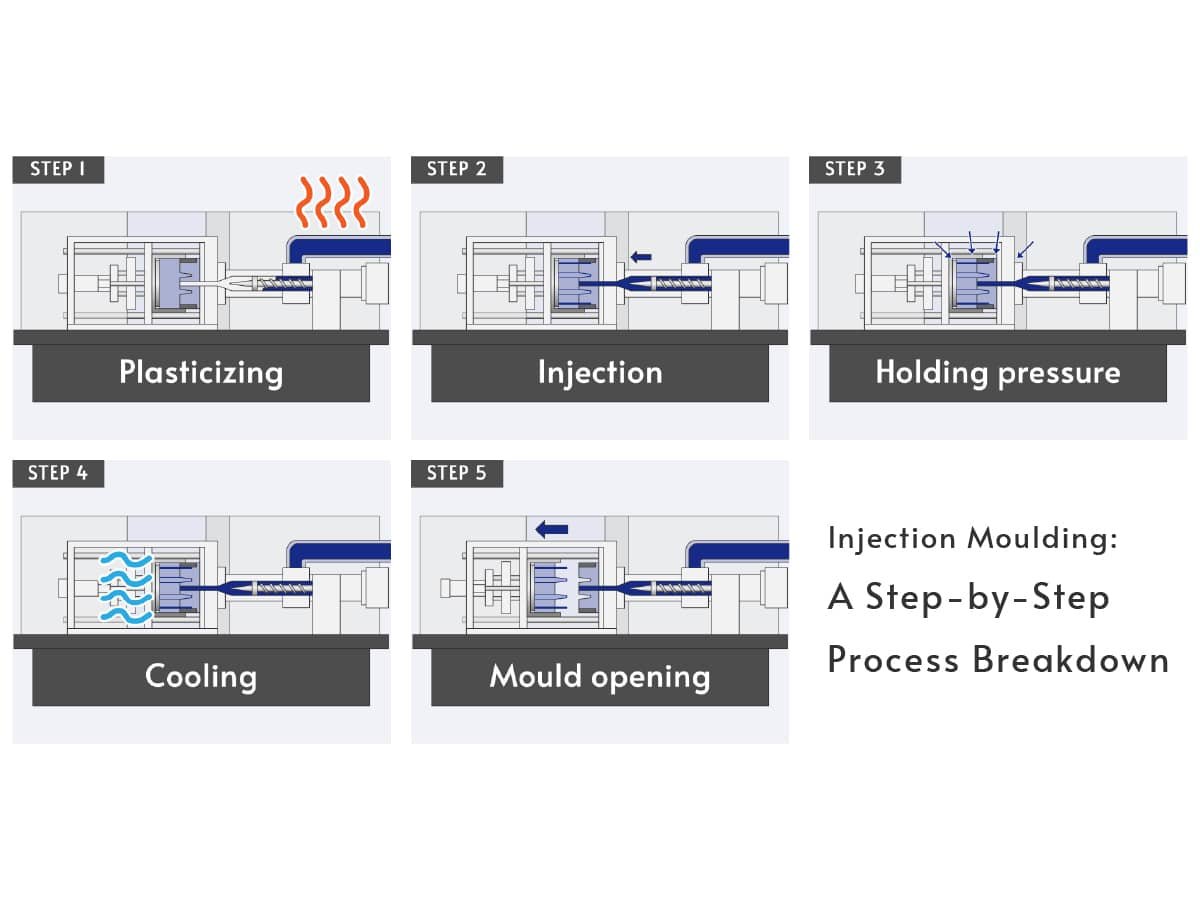
Pros and Cons of Low-Volume Injection Molding
When considering low-volume injection molding, it’s important to understand both its advantages and limitations. This approach offers flexibility and speed for early-stage production but may come with trade-offs in cost and scalability. Below is a clear breakdown of its pros and cons to help you decide if it’s the right fit for your project.
Advantages of Low-Volume Injection Molding
Lower Initial Investment & Risk: Uses simplified or soft tooling, reducing upfront costs and risk for design changes.
- Faster Turnaround: Shorter lead times help accelerate prototyping and market entry.
- Flexible for Design Iterations & Customization: Ideal for design validation, small orders, and multi-variant production.
- Reduced Inventory Risk: Smaller batches avoid overproduction and unsold stock.
- Better Quality Control in Early Stages: Easier to monitor and adjust processes batch by batch.
Disadvantages of Low-Volume Injection Molding
- Higher Unit Costs: Tooling, setup, and material costs are spread over fewer parts.
- Lower Production Efficiency: Frequent changeovers increase downtime and planning complexity.
- Limited Economies of Scale: Less bargaining power for materials and less cost optimization compared to mass production.
- Consistency Challenges: Maintaining tight tolerances across multiple small batches can be harder.
- Potential Tooling Limitations: Soft tooling may wear out faster and lack long-term durability.
When to Use Low-Volume Injection Molding?
Low-volume injection molding is ideal when flexibility, speed, and cost-efficiency outweigh the need for mass production. Here are the key scenarios where it delivers the most value:
- Prototyping & Design Verification: Perfect for functional prototypes or pilot runs when designs are ready for real-world testing before full-scale production.
- Market Testing & Early-Stage Products: Small batches reduce risk when introducing new products and allow for quick consumer feedback.
- Small-Batch Manufacturing: Suitable for startups, specialty products, or limited runs of 100–10,000 parts, offering lower upfront investment and faster lead times.
- Frequent Design Changes: Easy tooling modifications make it ideal for products that evolve rapidly or require version updates.
- Customization & On-Demand Production: Supports multiple colors, variants, or niche products without large inventory or tooling costs.
- Budget Constraints & Volume Uncertainty: Reduces financial risk when future demand is hard to predict.
Design Guidelines for Low Volume Plastic Injection Molding
Successful low volume plastic injection moulding depends on part design. Design for manufacturability (DFM) principles help avoid production pitfalls and optimize cost and quality. Learn more about injection molding design guide:
Wall Thickness
Maintain consistent wall thickness to avoid warpage, sink marks, or incomplete filling. A typical thickness range is 0.04 to 0.14 inches (1 to 3.5 mm), depending on material. Avoid abrupt thickness changes by using smooth transitions.
Draft Angles
Incorporate draft angles of 1-2° for smooth surfaces (or more for textured ones) to facilitate part ejection and avoid damaging the mold.
Material Selection: Choose thermoplastics based on application needs and ensure materials match performance requirements.
Ribs and Gussets
Add ribs for structural support, keeping their thickness at 50-60% of the wall thickness to minimize warping. Gussets can further reinforce corners without adding excessive material.
Fillets and Radii
Replace sharp corners with radii or fillets to minimize stress concentrations and improve flow and moldability.
Gate Placement
Position gates strategically to ensure even plastic flow and minimize visible marks. Poor gate placement can cause air pockets or weak spots in the part.
Design for Mold Ejection
Include appropriate space for ejector pins, consider parting lines, and avoid undercuts that complicate mold design unless necessary.
Mold Manufacturing for Low-Volume Production
Here’s a detailed look at the key aspects of mold manufacturing for low volume plastic molding:
Mold Types: Standalone vs. MUD Molds
Low volume injection moulding offers two primary mold types: standalone molds and Master Unit Die (MUD) molds.
Standalone molds include the core, cavity, and all necessary components. These molds support larger parts, limited only by the machine’s capacity, but involve higher tooling costs due to their complexity.
Conversely, MUD molds use a universal frame that holds a removable insert, reducing costs by machining only the core and cavity. While MUD molds limit part size based on the frame, they significantly lower upfront expenses, making them ideal for small volume injection molding.
Mold Materials: Aluminum vs. Steel
For low volume plastic injection moulding, molds are typically made from aluminum.
Aluminum molds are softer, easier to machine, and faster to produce (often in 1-2 weeks), offering substantial cost savings. However, they wear faster, especially with abrasive materials like glass-filled nylon or corrosive plastics like PVC.
Steel molds, while more expensive, provide superior durability, supporting tighter tolerances and finer surface finishes.
Part Tolerances
Steel molds enable tighter tolerances, reducing dimensional variations and ensuring better fit and function compared to aluminum molds.
Mold Finish
The surface finish of the mold directly affects the appearance and texture of the final part. In low volume plastic injection molding, molds are polished or textured at the end of the manufacturing process to achieve desired finishes, such as glossy or matte surfaces. Steel molds excel in producing parts with superior finishes, including mirror-like surfaces, due to their hardness.
Mold Temperature Control
Effective temperature control is essential to avoid defects like sink marks or warping in small volume injection molding. Aluminum molds heat up quickly but struggle to maintain consistent temperatures, especially for high-temperature plastics like polycarbonate. Steel molds, with better heat retention, ensure precise temperature control.
Manufacturing Methods: CNC vs. EDM
Molds for low volume injection molding are typically manufactured using Computerized Numerical Control (CNC) machining or Electrical Discharge Machining (EDM). CNC machining, which uses sharp cutting tools to remove metal, is faster and ideal for molds with ribs or complex geometries. EDM, using electrical sparks to erode metal, is slower but excels in creating sharp internal corners, deep cuts, or mirror finishes required for specific parts.
Partner Jiangzhi as Low Volume Injection Moulding Manufactuer
Jiangzhi with advanced manufacturing technologies, flexible production capabilities, expert design support and competitive pricing enabling rapid mold production and high-precision parts. Welcome to contact Jiangzhi and get a custom low volume injection molding solution.


